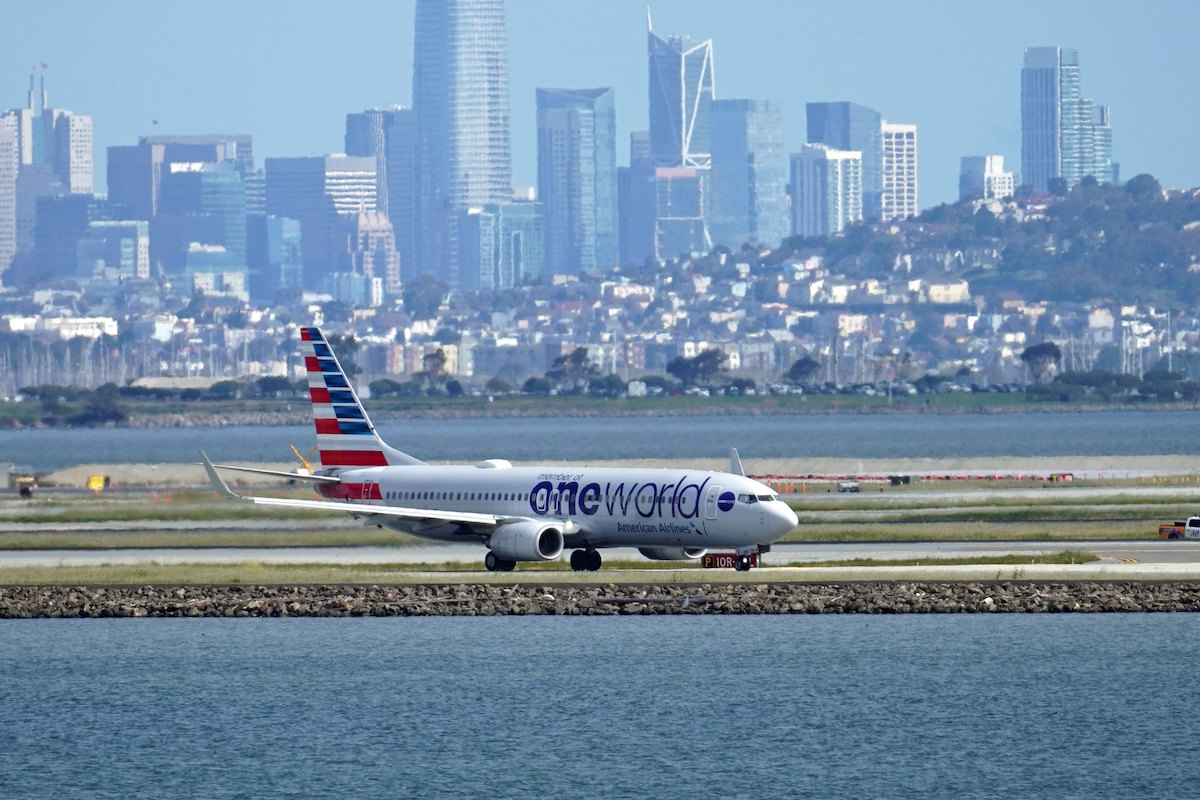Skift Take
American unveiled an interesting strategy during its investor day Monday afternoon — bolster its loyalty program and presence in small U.S. cities.
American Airlines is rethinking its strategy.
Rather than emphasizing capacity across long-haul international routes – like Delta Air Lines and United Airlines do — American is looking to small U.S. cities and its loyalty program to boost its bottom line.
Since the pandemic, airline executives have mostly noted booming international travel. United announced orders for a slate of widebody jets in October as part of its ambitions to grow its extensive international network. It also added more routes to Asia. Delta ordered 40 Airbus A350s and expected another record summer for transatlantic travel.
But American is forging its own path.
Explosive Population Growth in the Sun Belt
American chief commercial officer Vasu Raja said the airline has been taking note of changing population trends in the U.S., particularly in the Sun Belt region.
While much of the U.S. travel market is concentrated among major coastal areas like New York, Los Angeles, San Francisco and Boston, the Sun Belt region has seen explosive population growth.
“Increasingly, the Sunbelt states are producing economic growth at a premium to the nation’s average, the other states are at a deficit and those four large coastal markets, even at a further deficit to that,” Raja said at American’s investor day on Monday.
For example, real estate investment firm Clarion Partner forecasted the region’s population to increase 55% by 2030. The region has also accounted for around 75% of U.S. population growth in the past decade, according to U.S. Census data.
The region, comprising the southeastern and southwestern U.S., contains many smaller — but fast-growing — cities like Charlotte, North Carolina and Jacksonville, Florida.
“Customers in those smaller cities pay materially more than what the system average is,” Raja said. “And that probably stands to reason because their demand is growing and there’s an inadequate level of supply for them.”
More New York to El Paso Flights?
Raja also pointed to fast-growing regions in places like Texas and Oklahoma.
“There is a large pool of high-growth, high-value customers because air travel needs are simply not being met,” Raja said. “And that’s where American Airlines comes in.”
In particular, Raja used the example of El Paso, Texas. While ultra-low-cost carriers like Frontier Airlines and Allegiant Airlines serve El Paso, Raja said a carrier like American would be more appealing due to its bigger schedule and operational reliability.
“What American Airlines uniquely does is we’re able to get customers from El Paso to Louisiana and El Paso to Montgomery, Alabama, El Paso to Mexico City and El Paso to Madrid, Spain,” he said.
The emphasis on smaller cities also falls in line with American’s latest blockbuster order, which included 90 Embraer E175s, regional jets that have fallen out of favor with the major airlines.
American isn’t abandoning international long-haul flights, though. Raja said the carrier seeks to build out its short-haul domestic network, and then link its international one.
“We say that our short-haul network is the foundation for how we go and create value for our customers, for our investors,” Raja said. “But very importantly, when that’s our foundation, that creates the opportunity for us to ladder a profitable international network off a bit.”
Big Ambitions for AAdvantage
The other aspect of American’s strategy is increasing membership in its frequent-flier program. In 2023, around 65% of American’s revenue was driven by members of its AAdvantage program.
Of that 65%, one-quarter was composed of AAdvantage members who don’t spend on premium products like first class, premium economy, or the airline’s co-branded credit card. Raja said American wants to tailor premium products to those travelers.
“They want to be rewarded for actually buying higher-value products and services,” he said.
The carrier expects revenues from premium products and AAdvantage to continue growing into the decade. Around 80% of American’s 2024 revenue is expected to come from the frequent-flier program and premium products.
Due to the growth seen from AAdvantage and premium products, American plans to add more premium seating to its fleet, which Raja forecasts will grow by 20% in the next few years. American is currently retrofitting some of its older Airbus planes to fit more first class seats.
And to increase frequent flier sign-ups, American made some minor changes to AAdvantage earlier in the year that included allowing members to purchase one-day passes to Admirals Club lounges or Flagship lounges, hold a flight for 24 hours without booking and fly domestic flights on standby without paying a fee.
“Our true north, as [CEO Robert Isom] referred to, is this: that life is better as an AAdvantage customer,” Raja said.
The Daily Newsletter
Our daily coverage of the global travel industry. Written by editors and analysts from across Skift’s brands.
Have a confidential tip for Skift? Get in touch
Tags: aadvantage, american airlines, embraer, small cities
